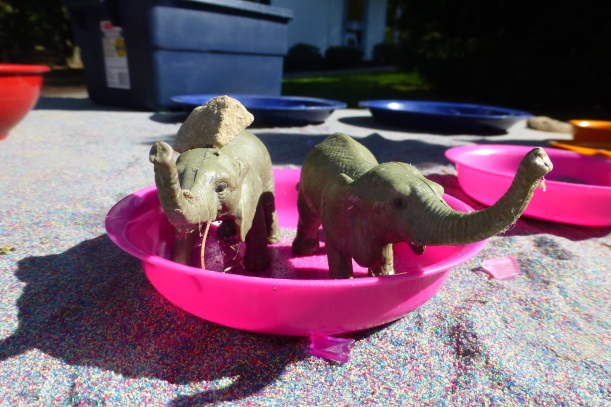As a parent, it is easy to get caught up in the readily noticeable achievements of my children. I can see if they are able to identify all of the letters of the alphabet. I can hear their attempts at reading or watch them playing with symbols on paper. Yet, I could be unsure about where my child fits into the “normal” range.
Playing at the park, I might hear another mother speaking to her four-year-old and requesting the proper spelling of the word swing-set. My sisters, brothers, and cousins might unconsciously (hopefully), frequently boast about how “far ahead” their children are. The stories I hear on the news and from co-workers can even scare me into worrying about my four-year-old child’s academic readiness for college. All of these pressures and fears are normal. You might feel a few of them, too. It can be overwhelming.
What subjects should I be working on with my young child? When do I need to start? How will I know if they need a tutor? What if they aren’t as far ahead as their brother/sister/neighbor/friend? How can I make the whole process go faster? Do I want to?
Now, take a deep breath.
Another one.
Let’s figure out what a young child’s important skills actually are.
A person’s brain controls an almost innumerable collection of processes. Each process has a vital role to play in our lives. Some are required for our physical health, our emotional well-being, our cultural connections, our logical understanding, and even an over-reaching ability to orchestrate all of these processes in a connected, moderately well-ordered manner. A few processes (those unconscious orchestrations that keep us alive; breathing, heart rate, nutrition extraction) are present fully formed at birth. Most of the others need to be discovered and practiced.
Young children’s processes develop in a myriad of directions:
- Language Development
- Emotional Development
- Social Development
- Executive Function
- Large Motor Development
- Small Motor Development
- Cognitive Development
just to name a few. While there are connections between all of these, some relationships may seem obvious and others elusive. Either way, each process takes its own time to develop. Sometimes one (maybe language) appears to be taking off and becoming an obvious strength for a child. Two years later, that area of development may seem to pause while another shoots to the forefront of growth. It is quite common for children to develop in this “sling-shot” manner.
We can also expect our children’s development to look different from their brothers and sisters, cousins and friends. Each brain builds up different areas at varying times. One of my sons was able to throw a ball with accuracy at 18 months. His brain was focusing on motor control and hand eye coordination. My oldest wasn’t able to throw a ball with accuracy until he was about 2.5. However, the oldest developed language much more quickly than our ball thrower. They developed at different rates, but ended up at the same point. They are currently 9 and 12 and can both throw a ball and have excellent language skills.
The point is that it doesn’t largely matter which portion of their development blossomed first. There are multiple shoots off of the same plant. Some grow first, some grow later. They all grow.
Your cousin’s neighbors’ boss’s kid may be reading at an eighth grade level in second grade. It doesn’t mean that that child will be smarter, have a better job, do better in school, have more friends, be more popular, make more money. It simply means you have two separate children. They have two different brains. Both will learn and both will grow into an adult life.


An excellent and very sensible post, Marie.
Well said, Marie. Bravo!
This is great advice, Marie. The best thing parents can do for their children is love them, talk with them, read to them, play with them, encourage their questions and help them discover the answers. You are right, six months difference in age when learning to read has little impact on later success in life. What has been shown to be the best indicator of success is social-emotional development. This is formed through relationships – formed by talking, reading and playing together.